The wind, a solid, in-your-face, 20-knot cast-crippler with gusts strong enough to take even the best-secured ball cap and send it flying into the clear Caribbean, forced me to turn my “good ear” toward seasoned Bahamian guide Travis Sands, just to hear his instructions.
He was frustrated. I was frustrated.
“I said, ‘Don’t strip!’” he hollered from the polling platform.
I, of course, had picked up the wrong half of his tutelage. I stripped. And the two massive permit that had showed momentary interest in my crab fly scattered to the currents, gone forever. Finally, my fishing buddy for the day, Earl Harper, stepped in to translate from the bench seat behind me. And not a moment too soon. Travis pointed off to the east and shouted.
“Blah, blah, Chris!” I heard Travis shout. “Blah, blah, permit blah, blah ray!”
“There’s a school of three permit following a ray,” Earl said to me, echoing Travis’ words loudly enough to puncture that damned persistent wind. I looked off to the east and could see the dark ray — a big, beautiful fish in its own right — about 200 yards away and closing fast. And then I saw that razor-sharp sickle of a tail slice through the chop. And then another. And another. My knees wobbled.
“Blah, blah, Chris!” Travis shouted over the gale. “Blah, blah, blah ready!”
“He’s going to turn the boat,” Earl said. “He said you should cast when you’re ready.”
I started peeling fly line off the reel, piling it at my feet and prepping for one of those rare shots at the preeminent flats fish of the tropics. I watched the ray and the trailing permit closing in on the boat as Travis turned the craft and gave me what amounted to my best shot of the day. I cast about 50 feet, wind be damned, and put my crab pattern about three feet ahead of the cruising stingray.
“Blah, blah!!” Travis shouted.
“Don’t strip!” Earl translated.
The ray closed on the fly, and I knew that if I let the ray slide over the heavy crab imitation, the fly would squirt out from under it and look exactly like what I wanted it to look like — a hefty piece of crustacean protein kicked up by the ray, ready to be gobbled up by one of the three trailing permit.

And they weren’t just any permit. They were big. Huge, even. When we saw the first bunch earlier that morning, also in that classic behind-a-ray scenario, I was floored. I’ve fished to permit before in Ascension Bay and Chetumal Bay in southern Mexico — I’ve even caught a few. But these were “big boy” permit. As Earl, who had the first unsuccessful shot from the casting deck, battled the wind and what Travis described as “buck fever” during that initial encounter, I was audibly astounded at what I was seeing.
“Holy hell,” I said. “Those things are giant. I bet they’re pushing 40 pounds.” I’m sure my declaration only served to further Earl’s pre-cast anxiety. His first cast sailed off into the breeze, eliciting a curse from both the angler and from the guide atop the platform.
Earl’s next cast was sure to be his best. Travis had the boat right. The fish were there, just behind the cruising ray. Everything was good … until Earl stepped on the fly line as he cast, yanking the fly from its intended course and making it fall 10 feet short.
“Son of a …” he let slip, as he stripped quickly, hoping against hope for one more shot. It wasn’t to be.
And now, as I waited for the hapless fly to shoot out from under the gliding ray, it was my turn to try and nab one of these flats bandits.
“Blah, blah!” Travis said from the platform.
“Short strip,” Earl conveyed. I gave the line a short tug.
“Set! Set!” Travis screamed loud enough to penetrate the wind and reach my eardrum. I didn’t need Earl to translate. I stripped hard and the line pulled tight.
Tight to the ray.
Apparently, my strip-set pulled the fly out of the lead permit’s mouth and snagged the fleshy back of the ray. In the clear Caribbean water, I could see it all, the fly firmly secured the ray’s back, just above its tail.
“Son of a …” I muttered. And then it got weird.
There was zero hope of getting the fly back, and a less-than-zero chance of actually turning a 75-pound, tail-snagged stingray and getting it to the boat. I pointed my rod at the big fish and waited for the line to snap. Then, I watched as not one, but two of the trailing permit took turns dive-bombing the crab fly that was sturdily fastened to the ray’s backside.
“They’re still going after the fly!” I heard Travis shout over the wind, a bit of mirth pushing through the howling wind with the exclamation.
“They’re hitting the fly that’s stuck in the ray,” Earl translated.
“I’m deaf,” I said, waving him off, frustrated. “I’m not friggin’ blind.”
And that’s how we were introduced to what might be the next big permit factory in the Caribbean. That morning spent cruising the flats with Sands — a well-known, longtime guide at Abaco Lodge (now defunct after falling prey to Hurricane Dorian in 2018) who now guides out of Soul Fly Lodge — Earl and I counted dozens of fish. We had ample opportunities, but the hooked ray represented our best shot. A willing fish, a decent cast ... all the ingredients. Just horrible damned luck.

Soul Fly Lodge, the only fishing lodge in the entire chain of Berry Islands, is still completing its first full season. Situated smack dab in the middle of the Bahamas’ most iconic bonefishing destinations — Abaco, Andros, and Grand Bahama — the Berrys are, unsurprisingly, a bonefish paradise. But the permit? They’ve been a pleasant surprise for lodge proprietors Kyle and Kitri Schaefer, even considering that it was trusted intelligence about the existence of the Berry’s little-known, untapped permit fishery that led the pair to explore the idea of opening a fishing lodge on sleepy Great Harbour Cay. After a bit of promising recon — which included two permit caught on their first visit to the island — the decision was made.
“Still, we weren’t entirely sure what to expect from the permit fishery. Mostly, we’ve just been looking forward to seeing how good it can be,” Kyle said to me as I relayed that first day’s events, a stiff tumbler of Mount Gay over ice helping to salve my wounded spirit. As we all settled into seats at the lodge bar, Travis recounted my failed attempt to Kyle in glorious detail — where we’d spotted the fish, how we’d made our approach, how we managed to hook the giant stingray, and the dogged persistence of two permit to wrench the stuck crab imitation from the ray’s back — his telling buoyed by his contagious laughter which left us all grinning ear-to-ear, despite the story’s unfortunate outcome.
That was five months ago, and the Berry Islands permit continue to put on a show. Frequent updates from Kyle indicate that the fishing remains better than expected and, the more the lodge’s guides dial in the fishery, the better it gets.

Four of us spent a few days exploring the permit flats of the Berry Islands, and one of us did hook and catch a nice 17-pound permit. But we all saw fish. On the flats. Every day. And some days we saw hundreds. Perhaps more importantly, we all saw big fish — including a few tails that nearly made our hearts pound clear out of our chests.
Perhaps it’s too early to declare the Berry Islands to be the Caribbean’s next great permit destination. But it’s not too early to wonder if that is, indeed, the case. So far, reports are promising.
Even if you’re not a confirmed permit-addict, the Berrys are a magical place for flats anglers. We counted schools of bonefish in the thousands, and enjoyed classic walk-and-wade shots to giant bones tailing over blonde sand flats and tight against mangroves. We also enjoyed casting to surprisingly plentiful triggerfish that seemed to show up out of nowhere, and we spent half a day casting to barracuda and mutton snapper in the creeks surrounding Great Harbour Cay.
But when you factor in the dependable presence of permit, you have a destination that transcends the typical Bahamas flats-fishing experience. Permit are by no means unheard of in the Bahamas. But, with the exception of Crooked Island — at the extreme southeastern edge of the chain of Bahamian islands — and a few seasonal fisheries off certain portions of Andros and Abaco, there has never been a dependable, “go-to” Bahamas permit fishery. That’s why you’ll find places like Belize, Mexico, Cuba, and Honduras on virtually every list of “top permit destinations,” but scarcely, if ever, find the Bahamas mentioned.

But the Berry Islands? Maybe this hidden-in-plain-sight little string of cays and cuts in the Caribbean is the exception to the rule — and that’s something very special, indeed.
I think Kyle knows this might be the case, even if he’s unwilling to proclaim it.
“I’m glad you guys saw some fish,” he said to me that day, as I gulped down my third iced tumbler of rum, trying to wash away the images of my fly stuck in the back of that ray. Smiling wryly, he added “I hope you see some more tomorrow.”
If You Go
Choosing a Lodge
For now, angler hoping to chase Berry Islands permit and bonefish have an easy selection process. Soul Fly Lodge — located on Great Harbor Cay — is the first and only fishing lodge in the Berrys.
When to Go
The permit and bonefish fisheries of the Berry Islands can be fished year round, with dependable numbers of both fish encountered throughout the year. Mar-June are the prime permit months, followed by the autumn months of October-December. Anglers seeking big bonefish focus on the months of October-February, while those looking for big bonefish numbers typically aim for Mar-June.
Soul Fly Lodge operates 10 months of the year (the lodge is closed during July and August).
How to Get There
Great Harbor Cay is served by connecting flights from both Ft. Lauderdale, Florida and Nassau in the Bahamas. Flights from Ft. Lauderdale are approximately 50 minutes long. Connection via Nassau is listed as a 20 minute flight. In truth, that short flight is closer to 12 minutes long, so don’t plan for a nap.




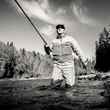
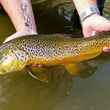

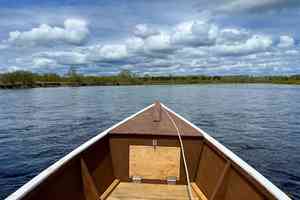



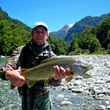
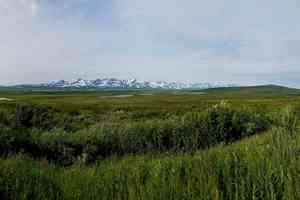


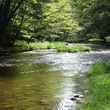
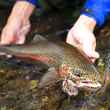



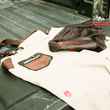
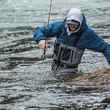



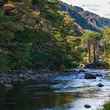
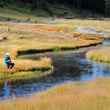
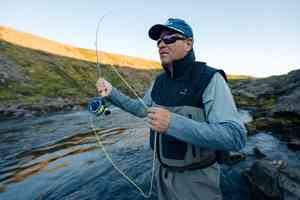

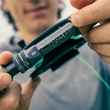


Comments
Glenn Dotter replied on Permalink
Nice article. I always get a kick out of the same people talking about climate change yet they show no concern for their carbon footprint when it comes to what they want to do.
Pages